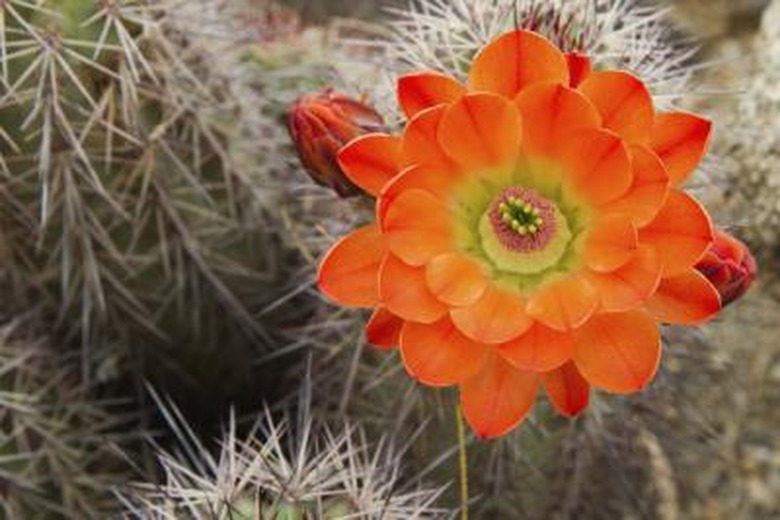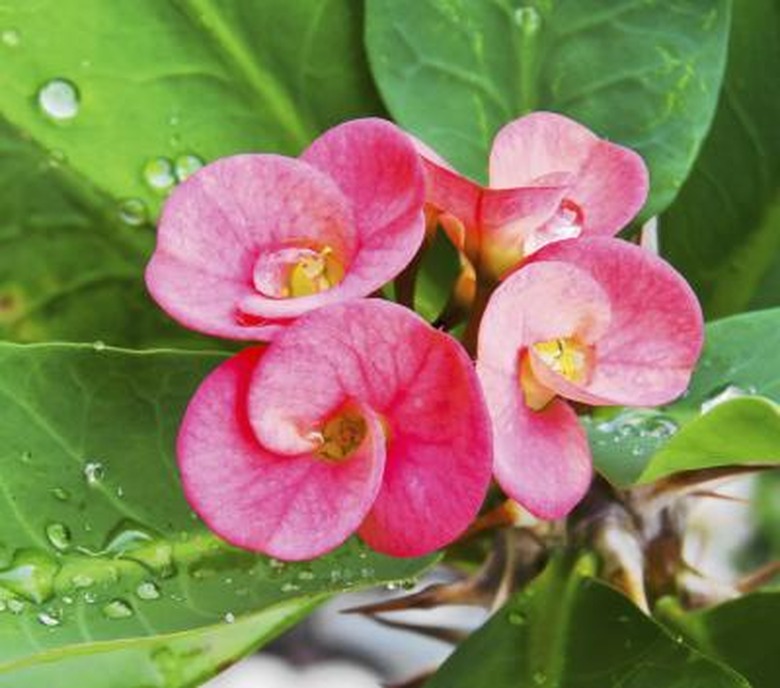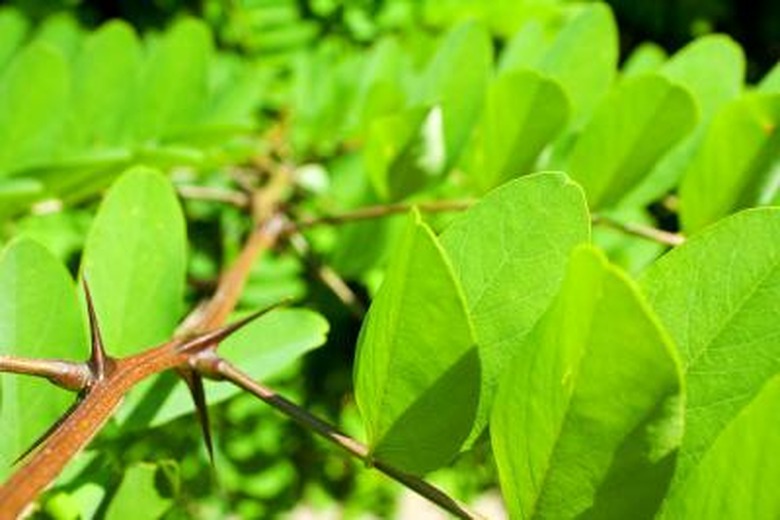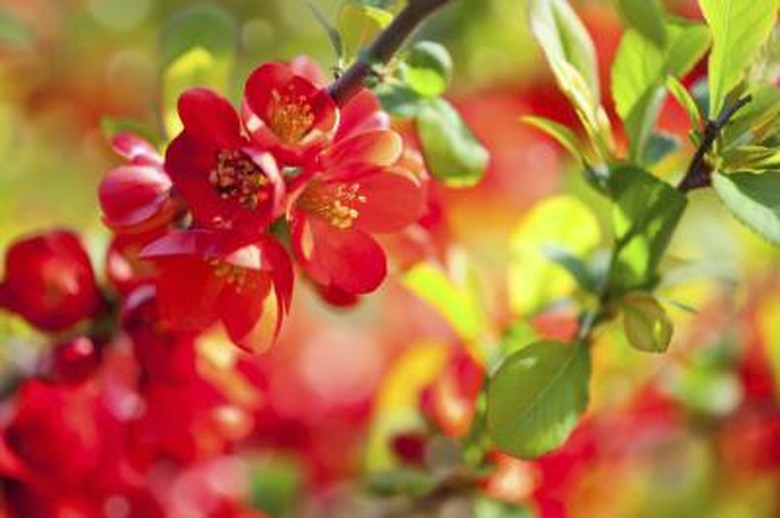List Of Flowering Plants With Thorns
When you think of flowers with thorns, you may most often picture the rose. However, a multitude of flowering plants have thorns or spines, and many of these make lovely additions to gardens, borders and other landscaping projects.
Crown of Thorns
According to the University of Florida's Horticulture department, the crown of thorns originated in Madagascar and is very tolerant to a hot climate. This particular flower needs minimal water and can survive in full sun, and when paired with a long flowering season, it is a popular choice for gardeners. While the original version of the plant had very prominent thorns, recent cultivars have not only reduced the thorns but they have even transformed into a somewhat ridge-like protrusion, rather than a sharp spike. The flowers of the crown of thorns vary from species to species and can include deep red, pale pink and cream colored blossoms. The hardiness zones for this tropical plant is 11 to 12.
Thorn Acacias
According to Palomar University, acacia is a very large genus with over 800 species of shrubs, bushes and large trees that can have a variety of foliage, including fern-like leaves and fragrant yellow blossoms. Pinnate-leaf acacias have sharp spines that typically grow in pairs. Species like the cat's claw have thorns, and while botanists use the two terms interchangeably, there are a few differences. Spines are basically leaf stipules while thorns are modified stems and both can be very sharp. The acacias are used for a variety of purposes including hardwoods for construction and gum acacia which is used in candy, food, pharmaceuticals and cosmetics. Hardiness zones for acacias vary by species, but typically fall between zones 6 to 11.
Flowering Quince
The University of Connecticut lists the common flowering quince as a thorn-producing plant that is native to China. This shrub stands anywhere from six to ten feet tall, with spiny branches and red, salmon, pink or white flowers that bloom in April. The thorny quince also produces fruit that resembles the apple, which can be used in preserves. The quince thrives in full sun, but can also tolerate partial shade. Pruning will help to create a beautiful foliage that can enhance your landscape along borders, hedges and barrier walls. Hardiness for the flowering quince is zone 5.



